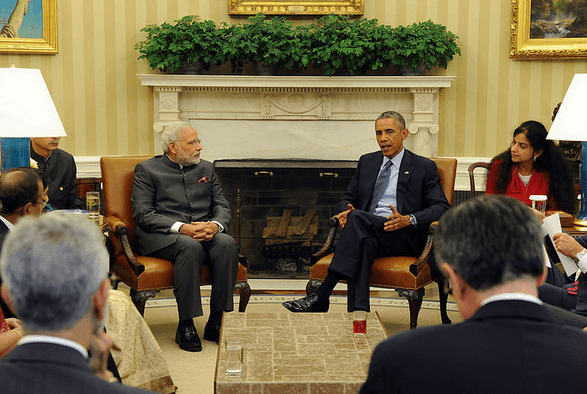Key Outcomes of Narendra Modi's US visit
A joint editorial released by India and US highlighted the following developments in the bilateral relationship of the two countries:-
Indo- US Investment Initiative
Establishment of an Indo- US Investment Initiative led by the Ministry of Finance on the Indian side and the Department of Treasury on the American side, with special focus on capital market development and financing of infrastructure. This Initiative will focus on increasing investment by institutional investors and corporate entities
Infrastructure Collaboration Platform
Establishment of an Infrastructure Collaboration Platform convened by the Ministry of Finance on the Indian side and the Department of Commerce on the American side to facilitate the participation of American companies in Indian infrastructure projects
Trade Policy Forum
The two countries committed to work through the Trade Policy Forum to promote a business environment that was conducive for companies to invest and manufacture in both in India and US. Also, an annual high-level Intellectual Property Working Group as a part of the Trade Policy Forum will be formed to look into issues related to innovation.
Others
- The two leaders also committed to hold public-private discussions in the early part of 2015 under the already existing Commercial Dialogue on new areas of cooperation, including innovation in advanced manufacturing
- After reiterating their commitment to working together towards the creation of a new global agreement on climate change, they agreed to hold an urgent meeting of their bilateral task force on HFCs (hydrofluorocarbons) prior to the next meeting of the Montreal Protocol
- The two leaders launched a new US – India Climate Fellowship Program to build each other’s long term capacity to address climate change related issues
- A MoU between the Export-Import Bank and the Indian Renewable Energy Development Agency was signed. This MoU would make up to $1 bn in financing available to India to help its transition to a low carbon and climate resilient energy economy, at the same time boosting American renewable energy exports to India
- The countries also agreed to a 10 year extension of the 2005 Framework for the US – India Defense Relationship
- The two leaders decided to intensify cooperation in maritime security, mainly by enhancing technology partnerships for India’s Navy and also upgrading the existing military exercise Malabar.
- USA pledged to help India counter the threat of IEDs (improvised explosive devices) through I&T (information and technology)
- The two leaders appreciated the establishment and planned first meeting of the NASA-ISRO Mars Joint Working Group under the U.S.-India Civil Space Joint Working Group and hoped for further co-operation in the area of space technology
- The two countries agreed to launch a new phase of the India-U.S. Vaccine Action Program and emphasis on developing affordable vaccines for dengue, malaria, and TB
- The two countries pledged to work together towards the export of nuclear technology from US to India to make India more self-reliant. In furtherance of this, the countries decided to continue working towards India’s phased entry into the Nuclear Suppliers Group (NSG), the Missile Technology Control Regime (MTCR), the Wassenaar Arrangement and the Australia Group. The American President expressed his support for India’s early application and eventual membership in all four regimes.
Month: Current Affairs - October, 2014


